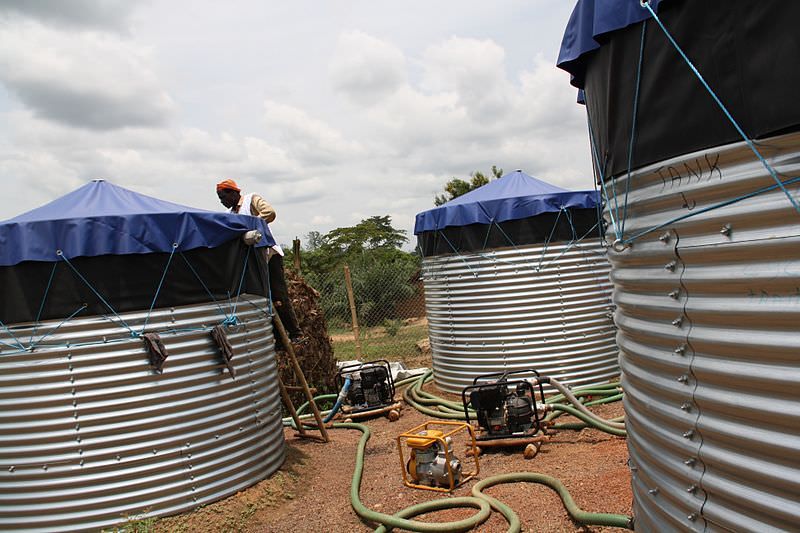Wastewater Treatment Plants in Rapid Mass Displacement Situations
Published on by Water Network Research, Official research team of The Water Network in Academic
This rapid review report has identified the wastewater treatment plant (WWTP) options used in emergency settings, with decentralised wastewater treatment systems (DEWATS) and mobile wastewater treatment units performing most effectively and with minimal costs.

UK Department for International Development - ICRC providing clean
drinking water at a refugee camp in Liberia,
Source: Wikimedia Commons
Examples are taken from refugee camps and internally displaced people (IDP) settlements due to the Iraq war, the Israeli-Palestine conflict, and the civil wars in Syria and Sudan. WWTP options used in Finland, Haiti, Iraq, Jordan, Palestine, Sudan and Turkey are discussed. Lessons learned from China and suggestions for the Rohingya crisis are also included.
A lot of available evidence focuses on water treatment plants, pre-assembled Mobile Water Treatment Equipment (MWTE), or modular water treatment kits (to be assembled in the field) which are used to clean water for drinking in emergency systems, which is not within the scope of this review.
The WWTP findings listed are based on peer reviewed journals, global funding agency reports, as well as grey literature. Model information is taken from global manufacturers specialising in WWTP production, however, there is a paucity of information describing models used in specific settlements/refugee camps in low-income/slum areas.
Senior experts consulted for this review confirm that there are very little published evaluations on affordable wastewater treatment plants used in emergency settings.
Although there are reports of camp areas specifically for women and children, most wastewater treatment plants are in settlements and sites to be used by both genders, therefore the data included in this review is gender-blind. No specific data searches were made for disabled WWTP users.
Question
- • When and where have emergency wastewater treatment plants been developed in rapid mass displacement situations and situations of limited space/access?
- • What models were used, and what were the implications in terms of performance and cost?
Contents
- 1. Overview
- 2. Wastewater treatment plants (WWTPs): options and models for emergency settings
- 3. WWTPs in rapid mass displacements and situations of limited space/access
- 4. Lessons learned
- 5. References
Tull, K. (2017). Wastewater Treatment Plants in rapid mass displacement situations. K4D Helpdesk Report 230. Brighton, UK: Institute of Development Studies.
Find the full report in the attachment
or download it from the source: GSDRC
Media
Taxonomy
- Wastewater Use
- Drinking Water Security
- Treatment
- Treatment Methods
- Drinking Water Treatment
- Treatment Plants
- Wastewater Treatment
- Sanitation
- Water & Sanitation
- Sanitation & Hygiene
- Drinking Water Managment
- Drinking Water
- Water Sanitation & Hygiene (WASH)